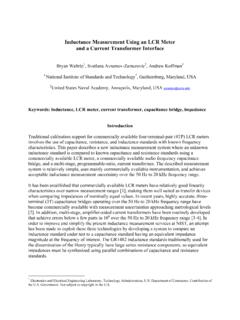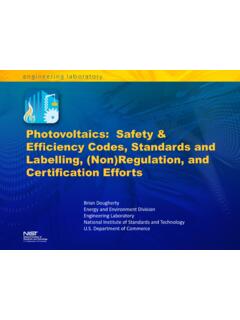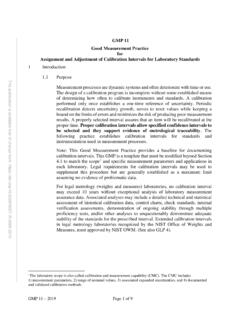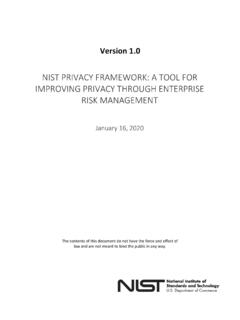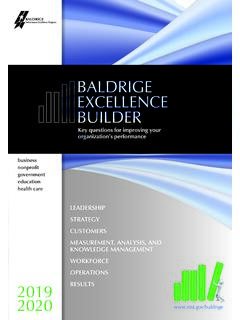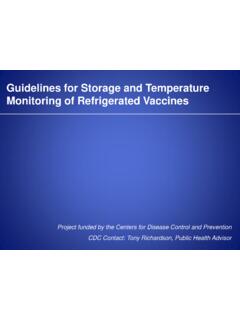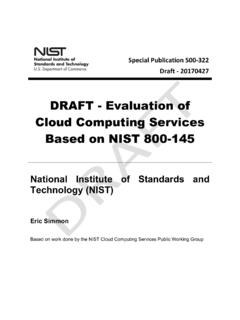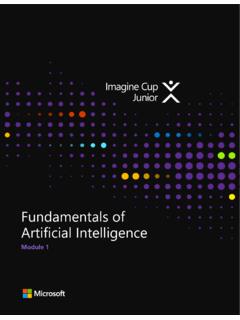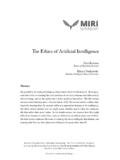Transcription of Four Principles of Explainable Artificial Intelligence
1 1 Draft NISTIR 8312 2 Four Principles of Explainable Artificial 3 Intelligence 4 P. Jonathon Phillips 5 Carina A. Hahn 6 Peter C. Fontana 7 David A. Broniatowski 8 Mark A. Przybocki 9 This draft publication is available free of charge from: 10 11 12 Draft NISTIR 8312 13 Four Principles of Explainable Artificial 14 Intelligence 15 P. Jonathon Phillips 16 Carina A. Hahn 17 Peter C. Fontana 18 Information Access Division 19 Information Technology Laboratory 20 David A. Broniatowski 21 Information Technology Laboratory 22 Mark A. Przybocki 23 Information Access Division 24 Information Technology Laboratory 25 This draft publication is available free of charge from: 26 27 August 2020 28 29 Department of Commerce 30 Wilbur L. Ross, Jr., Secretary 31 National Institute of Standards and Technology Walter Copan, NIST Director and Undersecretary of Commerce for Standards and Technology 32 33 National Institute of Standards and Technology Interagency or Internal Report 8312 34 24 pages (August 2020) 35 This draft publication is available free of charge from: 36 37 Certain commercial entities, equipment, or materials may be identified in this document in 38 order to describe an experimental procedure or concept adequately.
2 Such identification is 39 not intended to imply recommendation or endorsement by the National Institute of 40 Standards and Technology, nor is it intended to imply that the entities, materials, or 41 equipment are necessarily the best available for the purpose. 42 Public comment period: August 17, 2020 through October 15, 2020 43 National Institute of Standards and Technology 44 100 Bureau Drive (Mail Stop 8940) Gaithersburg, Maryland 20899-2000 45 Email: 46 All comments will be made public and are subject to release under the Freedom of 47 Information Act (FOIA). 48 Additional information on submitting comments can be found at 49 50 Trademark Information 51 All trademarks and registered trademarks belong to their respective organizations. 52 Call for Patent Claims 53 This public review includes a call for information on essential patent claims (claims 54 whose use would be required for compliance with the guidance or requirements in this In-55 formation Technology Laboratory (ITL) draft publication).
3 Such guidance and/or require-56 ments may be directly stated in this ITL Publication or by reference to another publication. 57 This call also includes disclosure, where known, of the existence of pending or foreign 58 patent applications relating to this ITL draft publication and of any relevant unexpired 59 or foreign patents. 60 ITL may require from the patent holder, or a party authorized to make assurances on its 61 behalf, in written or electronic form, either: 62 a) assurance in the form of a general disclaimer to the effect that such party does not hold 63 and does not currently intend holding any essential patent claim(s); or 64 b) assurance that a license to such essential patent claim(s) will be made available to appli-65 cants desiring to utilize the license for the purpose of complying with the guidance 66 or requirements in this ITL draft publication either: 67 i.
4 Under reasonable terms and conditions that are demonstrably free of any unfair 68 discrimination; or 69 ii. without compensation and under reasonable terms and conditions that are demon-70 strably free of any unfair discrimination. 71 Such assurance shall indicate that the patent holder (or third party authorized to make assur-72 ances on its behalf) will include in any documents transferring ownership of patents subject 73 to the assurance, provisions sufficient to ensure that the commitments in the assurance are 74 binding on the transferee, and that the transferee will similarly include appropriate provi-75 sions in the event of future transfers with the goal of binding each successor-in-interest. 76 The assurance shall also indicate that it is intended to be binding on successors-in-77 interest regardless of whether such provisions are included in the relevant transfer docu-78 ments.
5 79 Such statements should be addressed to: 80 Abstract 81 We introduce four Principles for Explainable artificial Intelligence (AI) that comprise the 82 fundamental properties for Explainable AI systems. They were developed to encompass 83 the multidisciplinary nature of Explainable AI, including the fields of computer science, 84 engineering, and psychology. Because one size fits all explanations do not exist, different 85 users will require different types of explanations. We present five categories of explanation 86 and summarize theories of Explainable AI. We give an overview of the algorithms in the 87 field that cover the major classes of Explainable algorithms. As a baseline comparison, we 88 assess how well explanations provided by people follow our four Principles . This assess-89 ment provides insights to the challenges of designing Explainable AI systems.
6 90 91 Key words 92 Artificial Intelligence (AI); Explainable AI; trustworthy AI. i 93 Table of Contents 94 1 Introduction 1 95 2 Four Principles of Explainable AI 1 96 Explanation 2 97 Meaningful 2 98 Explanation Accuracy 3 99 Knowledge Limits 4 100 3 Types of Explanations 4 101 4 overview of Principles in the literature 6 102 5 overview of Explainable AI Algorithms 7 103 Self- Explainable Models 9 104 Global Explainable AI Algorithms 10 105 Per-Decision Explainable AI Algorithms 11 106 Adversarial Attacks on Explainability 12 107 6 Humans as a Comparison Group for Explainable AI 12 108 Explanation 13 109 Meaningful 13 110 Explanation Accuracy 14 111 Knowledge Limits 15 112 7 Discussion and Conclusions 16 113 References 17 114 List of Figures 115 Fig. 1 This figure shows length of response time versus explanation detail.
7 We 116 populate the figure with four illustrative cases: emergency weather alert, 117 loan application, audit of a system, and debugging a system. 6 ii 118 1. Introduction 119 With recent advances in artificial Intelligence (AI), AI systems have become components of 120 high-stakes decision processes. The nature of these decisions has spurred a drive to create 121 algorithms, methods, and techniques to accompany outputs from AI systems with expla-122 nations. This drive is motivated in part by laws and regulations which state that decisions, 123 including those from automated systems, provide information about the logic behind those 124 decisions1 and the desire to create trustworthy AI [30, 76, 89]. 125 Based on these calls for Explainable systems [40], it can be assumed that the failure to 126 articulate the rationale for an answer can affect the level of trust users will grant that system.
8 127 Suspicions that the system is biased or unfair can raise concerns about harm to oneself 128 and to society [102]. This may slow societal acceptance and adoption of the technology, 129 as members of the general public oftentimes place the burden of meeting societal goals 130 on manufacturers and programmers themselves [27, 102]. Therefore, in terms of societal 131 acceptance and trust, developers of AI systems may need to consider that multiple attributes 132 of an AI system can influence public perception of the system. 133 Explainable AI is one of several properties that characterize trust in AI systems [83, 92]. 134 Other properties include resiliency, reliability, bias, and accountability. Usually, these terms 135 are not defined in isolation, but as a part or set of Principles or pillars. The definitions vary 136 by author, and they focus on the norms that society expects AI systems to follow.
9 For this 137 paper, we state four Principles encompassing the core concepts of Explainable AI. These 138 are informed by research from the fields of computer science, engineering, and psychology. 139 In considering aspects across these fields, this report provides a set of contributions. First, 140 we articulate the four Principles of Explainable AI. From a computer science perspective, 141 we place existing Explainable AI algorithms and systems into the context of these four prin-142 ciples. From a psychological perspective, we investigate how well people s explanations 143 follow our four Principles . This provides a baseline comparison for progress in Explainable 144 AI. 145 Although these Principles may affect the methods in which algorithms operate to meet 146 Explainable AI goals, the focus of the concepts is not algorithmic methods or computations 147 themselves.
10 Rather, we outline a set of Principles that organize and review existing work in 148 Explainable AI and guide future research directions for the field. These Principles support 149 the foundation of policy considerations, safety, acceptance by society, and other aspects of 150 AI technology. 151 2. Four Principles of Explainable AI 152 We present four fundamental Principles for Explainable AI systems. These Principles are 153 heavily influenced by considering the AI system s interaction with the human recipient of 154 the information. The requirements of the given situation, the task at hand, and the consumer 1 The Fair Credit Reporting Act (FCRA) and the European Union ( ) General Data Protection Regulation (GDPR) Article 13. 1 155 will all influence the type of explanation deemed appropriate for the situation. These situa-156 tions can include, but are not limited to, regulator and legal requirements, quality control of 157 an AI system, and customer relations.
